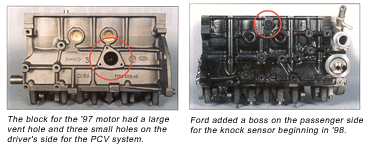
The old 1.9L was modified and upgraded in the process of making it into the 2.0L. The new engine was bored and stroked, it had siamesed cylinders that made the block stronger and quieter, the crank had four more counterweights that made it run smoother, and it had domed pistons for more compression.
The 2.0L also came with an all new head that had a split-port intake that used two runners, a narrow one and a wide one. The narrow one that had the fuel injector was offset to one side so it created a "high swirl" that improved the combustion process and gave these engines more low end torque along with better fuel mileage and lower emissions. Then, at 3,000 rpm, the butterfly in the secondary runner opened up to provide the additional air flow needed for more high-end power. The bottom line was a significant gain in both horsepower and torque; the 2.0L had 110 hp versus 88 hp (+22hp) and 125 ft.lbs. of torque versus 108 ft.lbs. (+17 ft.lbs.) compared to the old 1.9L. The additional power made both the Escort and the Focus reasonably quick for a change, with 0 to 60 times of just over 9 seconds. That’s not bad for a couple of econoboxes.
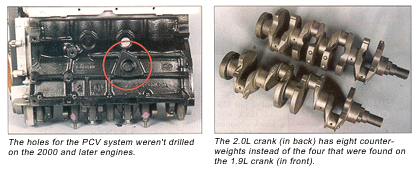
Although the basic design of the 2.0L engines has remained the same since ’97, Ford has made several changes to the block and heads over the last seven years, so it takes at least three short blocks, two heads and four completes to cover everything through 2003, including all the applications for both the Escort and Focus. With that in mind, let’s take a look at what Ford has done to confuse all the rebuilders.
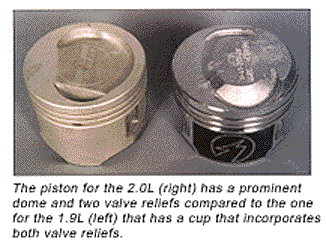
BLOCKS
There have been three blocks used since ’97.
1997 – The original 2.0L block was a F7CE-AA/AB casting that can be identified by the PCV vent hole on the driver’s side that has three bolt holes in a triangular pattern surrounding it.
1998-’99 – There was one small, but important change made to the block in ’98. Ford added a machined pad for a knock sensor on the passenger side, 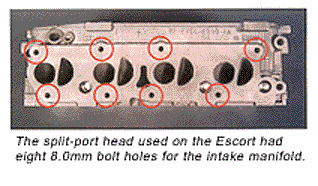
right between the second and third cylinders, just below the deck surface. It would be pretty hard to add this boss to a ’97 block, so plan on using this later version for the ’98 and ’99 applications. Look for a F8CE-AA casting.
2000-’01 – The block was revised one more time in 2000. The YS4E-DA casting looked just like the earlier F8CE-AA block with the hole for the knock sensor on the right side and the pad for the PCV on the left side, but the vent hole wasn’t machined and the three small holes around it weren’t drilled because the PCV system was changed so they were no longer needed.
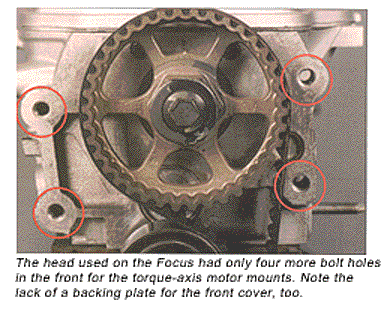
2002-’03 – We’re not aware of any specific changes to the block in 2002, but the Ford catalog shows a different part number for the short block, so there may or may not be a difference in the block. Be sure to check out the customer’s core before selling an ’02 or ’03 motor.
CRANKS
There’s been only one crank used in the 2.0L. It’s the F7CE-AA casting that has eight counterweights compared to only four counterweights on the 1.9L cranks.
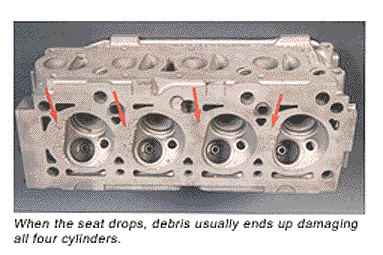
RODS
The 2.0L engines all used the same powdered-metal rods. They don’t have a casting number on them, but we’ve seen some of them ink-stamped with an E7EE-BA number.
PISTONS
Ford has used only one piston in the 2.0L motors. It has a prominent dome and two valve reliefs instead of a cup with two valve reliefs, so it bumps the compression ratio up from the 9.0:1 found on the 1.9L to 9.2:1 for the 2.0L. The ring grooves are all pretty narrow, 1.5mm, 1.5mm and 3.0mm, so pounding the pistons without rolling an oil rail can be a challenge.
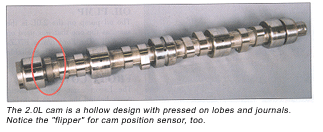
HEADS
There have been two heads used on these motors, one for the Escort and another for the Focus:
1997-’02 Escort – The original split-port head (c/n F7CE-AA) that came out in ’97 was used for the Escort until it was finally discontinued in 2002. It has a "Dee" shaped chamber, beehive springs, two intake ports leading to each intake valve, and eight 8.0mm bolt holes that are used to attach the intake manifold.
2001-’03 –When the 2.0L engine was installed in the Focus, it came with a unique cylinder head. It still had the split ports, but there were seven 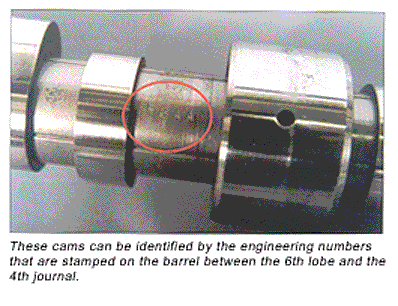
6.0mm bolt holes arranged in a slightly different pattern for the intake manifold. This head also had four big bolt holes in the front for the torque-axis motor mount that was used on the Focus. It’s a YS4E-DA casting.
CAMSHAFT
The 2.0L used the FOCZ-6250-A cam for both the Escort and the Focus from ’97 through 2003. It’s a hollow roller with pressed-on lobes that can be identified by either "FOAA" or "F3AA" stamped on the barrel of the cam between the 6th lobe and the 4th journal.
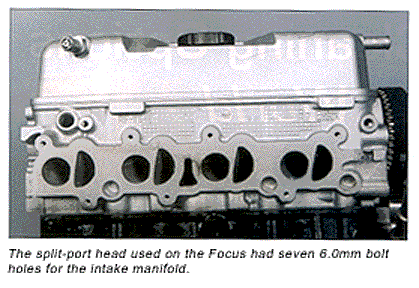
OIL PUMP
The oil pump on the 2.0L is the same as the one that was used on the 1.9L. The Ford p/n is F7CZ-6600-AB, but it’s readily available for less in the aftermarket, too.
FRONT COVER
The Escort came with a plastic cover behind the timing belt, but the Focus didn’t have one. The one that was used on the Escort is available as a part number F7CZ-6019-AA.
That’s the story on all the major components, but there are a few things you need to know about this engine in order to stay out of trouble.
- The oil ring grooves on these pistons are only 3.0mm wide, so the rails are extremely narrow and that makes them very prone to pop-out and roll over during assembly. Some brands are easier to work with than others, so try all of them until you find the one that works best for you and your assemblers and then make sure they’re extremely careful during assembly.
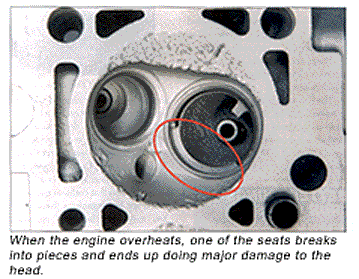
- These engines usually fail for one reason: The engine gets hot and the head spits out an intake seat. We’ve been told that this happens because the fan relay fails and allows the engine to overheat. Once the head gets hot, it distorts enough to break one of the powdered-metal seats into two or more pieces.
When that happens, the pieces beat up the piston and head in that cylinder and then move from hole to hole through the intake manifold until they end up damaging two or three more pistons along with the head before the engine is turned off.
But that’s not the worst of it. After the initial failure, there will be pieces of the seat left in the intake runners and in the EGR passage, so the installer has to completely remove both the intake manifold and the EGR tube from the car and clean them thoroughly or the remaining pieces of the seat will end up back in the reman engine as soon as it’s started. Unfortunately, most installers don’t know about the problem, so they push the intake off to one side and leave it in the car while they’re changing the motor. Then they bolt it back on the remanufactured engine and fire it up, with predictable results. So, rebuilders should hang a big, bright, red warning tag on these engines and make sure their salesman discuss the potential problems with the installer before selling one of these engines – or it will probably fail again and everybody will end up mad at everybody else.
There are lots of these engines out there. Ford has built over 1.5 million of them since ’97, so there’s a growing market for them, especially given the seat problems they seem to have. It’s an easy engine to rebuild and it’s worth doing, as long as you make sure the customer understands that he has to clean out the intake and EGR system if the original engine dropped a seat. Otherwise, it’s not much fun, because you will get to do it over again.













